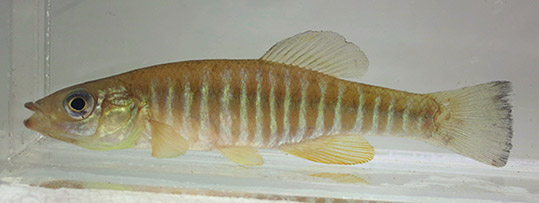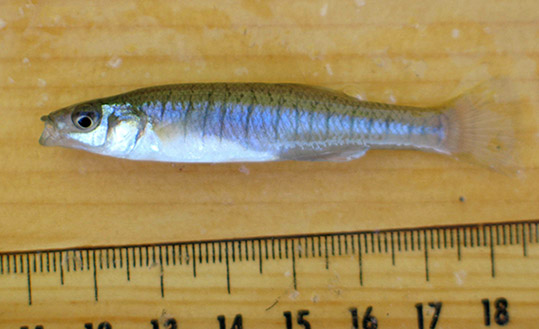Identify a fish quiz
Were you correct? Try again!Killifish
“Killies” are abundant in the estuary’s shallows and marshes. Seldom more than five inches long, our three common species are an important food source for large fish and other animals, and are often used as bait by anglers.
The name mummichog reportedly comes from an Indian word meaning “going in crowds;” it aptly describes this stocky killifish’s habits. Females are olive brown in color, sometimes with ten to eighteen vertical stripes. Spawning males are colorful, their dark sides marked with silvery spots and stripes and their underparts yellow. Mummichogs are very hardy fish, able to endure wide ranges of salinity, oxygen level, and temperature.

The banded killifish’s color ranges from green to brown, with fourteen to twenty vertical stripes along its side. Most common in fresh water, it sometimes occurs with mummichogs. The banded killifish is the more slender of the two, and the corners of its tail are more squared off than rounded.

The striped killifish, also fairly slender, grows larger than the other two species. Males have dark vertical stripes on their sides; females’ stripes are mostly horizontal, more so as they grow older, though there are usually a few vertical stripes near the tail. This species prefers salty water.




